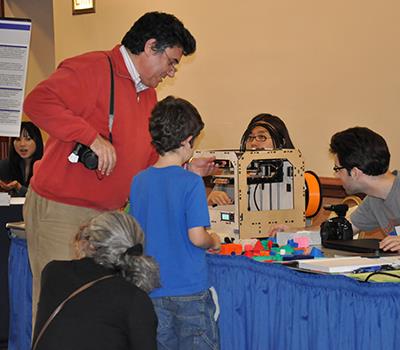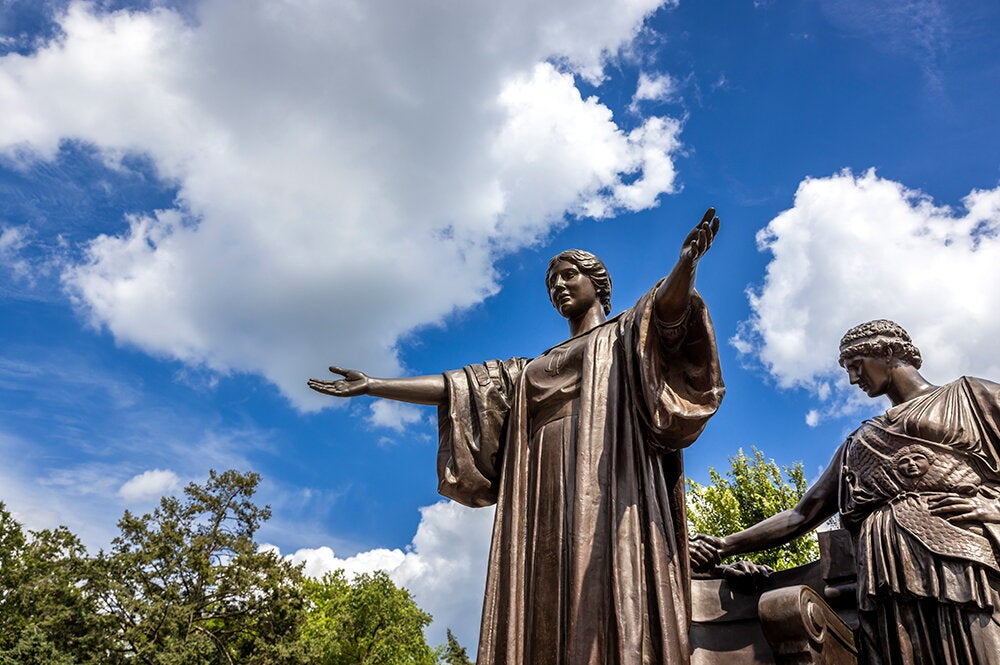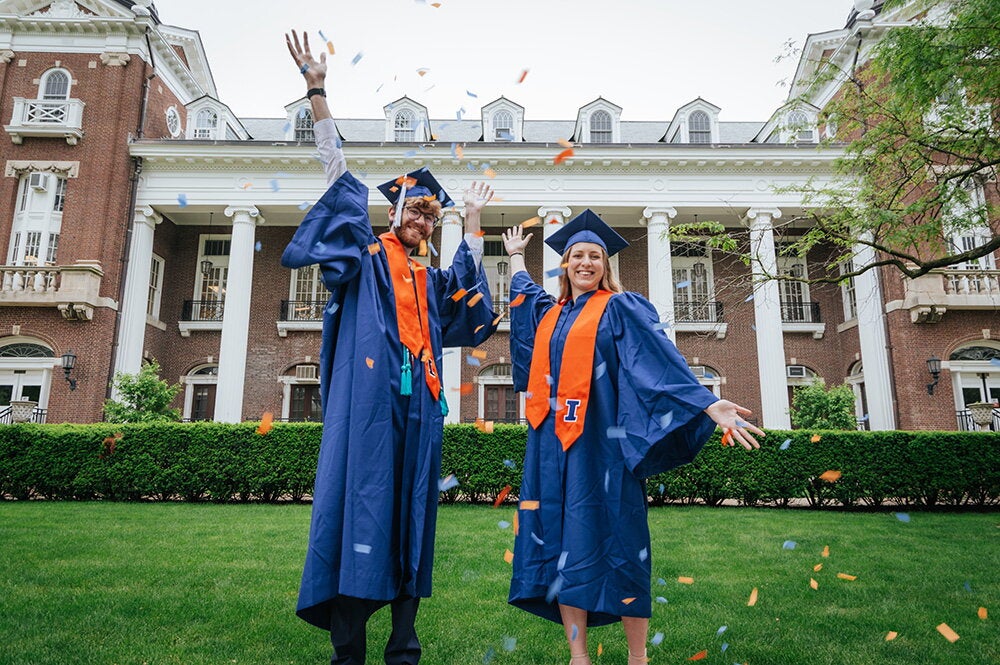

As a professor of mathematics, Jayadev Athreya knows a thing or two about numbers, but there’s one math question that eludes him: How many children have been exposed to the new and innovative programming of the Illinois Geometry Lab (IGL) since it launched in 2012? The lab director can only raise his palms.
“It’s in the thousands,” Athreya estimates, from his office in Altgeld Hall, with a trace of lost-my-homework regret, because he actually wishes he had that number. On the other hand, put yourself in IGL’s shoes, going to events such as the American Association for the Advancement of Science’s Family Science Day in Chicago, with hundreds of kids flocking to your booth. It’s hard to keep track of them all.
Perhaps it’s enough to say that the Department of Mathematics, and the IGL in particular, which coordinates most of the department’s outreach efforts (in addition to its role as a research arm for the department), has quickly become the face of the University of Illinois to countless children, parents, and educators eager to expose kids of all ages to the field.
Dozens of undergraduates, graduate students, post-docs, and roughly a half-dozen faculty in mathematics have given their time to the Illinois Geometry Lab’s outreach programs, Athreya says. They have taken IGL, which engages people with mathematics through visualizations such as paper models and objects produced by a 3D printer, to dozens of classrooms, open houses, training sessions, workshops, and other events around the state, at no charge.
“This is not technically our day job for any of us,” Athreya says. “We’re all doing this as a labor of love.”
And there has been a lot of love. Athreya describes the outreach efforts as being flush with support. It comes from University of Illinois students, who have been key to organizing and carrying out programs, to other faculty and offices on campus. Funding and support has come from the Office of Public Engagement and the Provost’s Initiative on Teaching Advancement, as well as the National Science Foundation.
Not only does the Illinois Geometry Lab hit the road, but people travel many miles to visit the IGL and events that it coordinates on campus. Earlier this month, they sponsored a campus event to engage middle school girls in mathematics.
The IGL will also play a central role in the upcoming MoSAIC Festival, held at the Illini Union and Altgeld Hall November 21-22, featuring the mathematics of science, art, industry, and culture. Visitors at MoSAIC will include students from Chicago Pre-College Science and Engineering Program, which has partnered with the U of I through the IGL to provide four-week workshops for fifth and sixth graders.
In the workshops, the first of which was last spring and the second of which began November 1, elementary-age students visit campus and sit in classes. Math professors also travel to meet the students in Chicago and conduct videoconferences with them.
Ali Lewis, director of University Primary School, a pre-K through fifth grade school on campus, says students responded well when IGL came to the school and taught them to look at patterns in plant and tree life. Later, someone from the Department of Mathematics helped students use simple materials to design and build a fulcrum (which they used to lift their teacher).
“Our students and teachers have been very engaged by the work with the [Illinois] Geometry Lab,” Lewis says. “We would like to continue strengthening our partnership.”
Such requests are an affirmation to Athreya and those involved with IGL. Outreach on this scale requires a lot of effort, but Athreya says they feel they are being successful at inspiring an interest in mathematics that will benefit children, the U of I, and society in general for years to come.
“Everyone in society needs to have a basic understanding of the world around them, and math is really a way to do that,” Athreya says. “And the way we teach them math is by having creative engagement. It’s not by lecturing, not by saying, ‘Here’s the book; read it and you’ll be done.’ It’s by getting that hook, and once you have that hook it’s easy. We’re trying to be that little Velcro that hooks them.”


